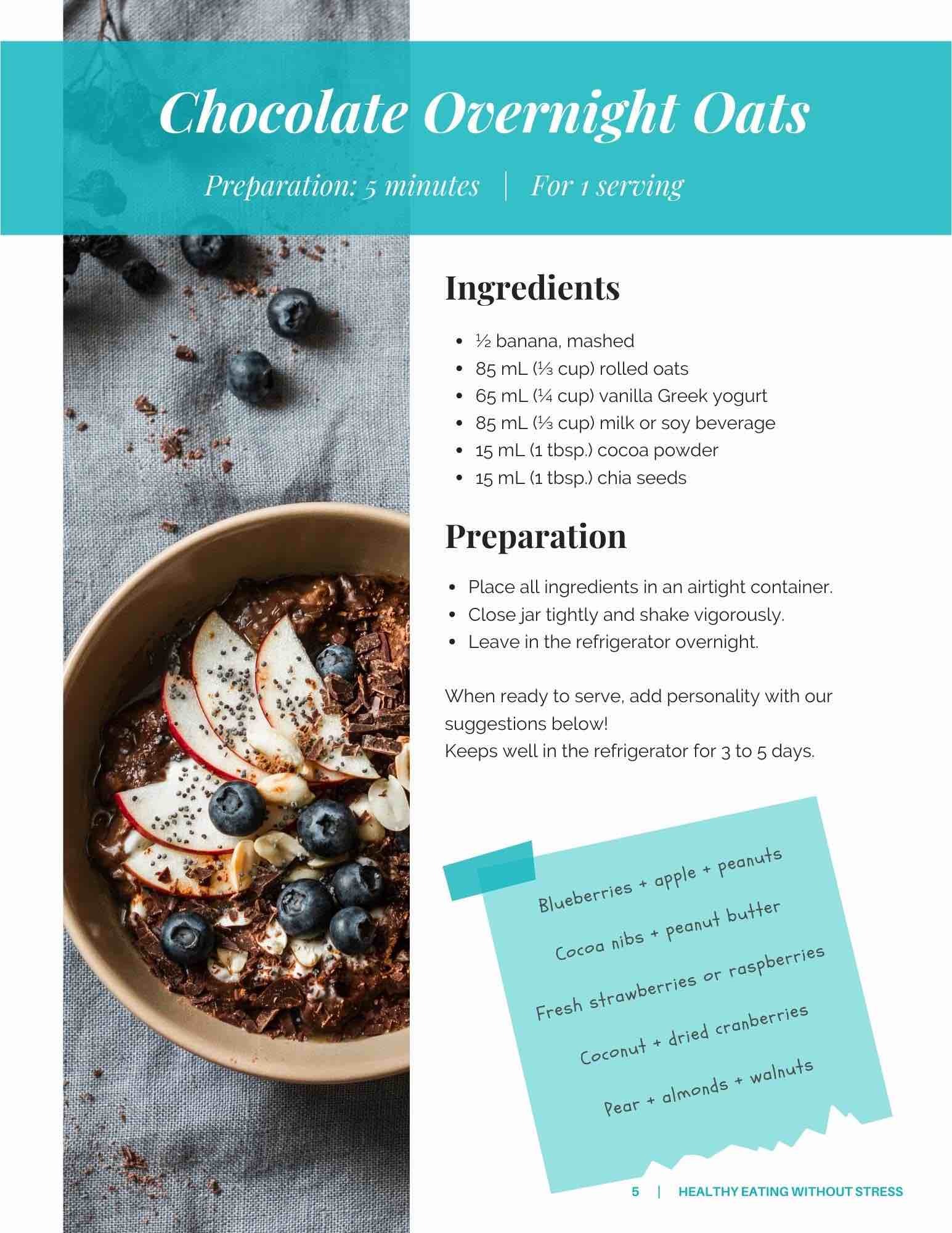
The menopausal transition typically spans 7 to 10 years, with onset occurring between ages 39 and 51 (1, 2). Approximately 90% of women in perimenopause report at least one symptom, and 25–65% report over twenty symptoms simultaneously (3). Nearly one-third of women suffer from a marked decline in quality of life (3).
During this period of hormonal imbalance, targeted lifestyle interventions should be considered integral to symptom management, as they complement pharmacologic therapies in reducing symptom burden and mitigating the risk of postmenopausal comorbidities (4).
Symptom Management Through Nutrition
Vasomotor Symptoms
Hot flashes and night sweats (primary vasomotor symptoms) affect nearly 60% of women, sometimes lasting 10 to 15 years or more (3). While hormone replacement therapy (HRT) is recognized for its effectiveness for these symptoms management, some women cannot rely on it due to medical history or contraindications (4). Women who are ineligible for HRT, who decline its use, or who experience persistent symptoms despite therapy may benefit from adjunctive, targeted nutritional interventions.
In fact, an increased intake of phytoestrogens (particularly isoflavones derived from soy-based foods) has been shown to alleviate vasomotor symptoms and vaginal dryness, while also contributing to the maintenance of bone density, cardiovascular health, and psychological well-being (5, 6). A daily intake of a minimum of 50 mg of isoflavones (equivalent to one serving of extra-firm tofu) from tofu, tempeh, soybeans, edamame, or soy beverages is sufficient to observe positive effects (5, 6). Registered dietitians offer personalized support and practical strategies to facilitate the incorporation of plant-based proteins into daily dietary patterns.
A daily intake of at least 1 g of omega-3 fatty acids is associated with a significant reduction in hot flashes and night sweats (7). Regular moderate to vigorous physical activity (e.g., brisk walking, cycling, swimming) also helps lower hot flash intensity by improving body temperature regulation, balancing the nervous system, and reducing stress (8).
Moreover, vasomotor symptoms may be exacerbated by poor hydration, hot beverages, caffeine, alcohol, and spicy foods (9). Registered dietitians can assist patients in implementing these dietary modifications, while accommodating individual lifestyle factors and preferences.
Digestive Symptoms
The decline in estrogen levels during perimenopause has been associated with alterations in gut microbiota composition (dysbiosis), impaired intestinal barrier function, and reduced gastrointestinal motility, which may contribute to symptoms such as constipation, bloating, and increased gas production (3). A high-fibre diet (30 to 50 g per day) containing soluble fibres (e.g., psyllium), insoluble fibres (e.g., leafy greens), and prebiotics (e.g., inulin) can improve stool consistency, bowel movement, and nourish the gut flora. In addition to overall intake and fibre type, the diversity of fibre sources (such as fruits, vegetables, whole grains, legumes, nuts, and seeds) plays a critical role in optimizing health outcomes. Findings from the American Gut Project demonstrated that individuals who consumed 30 or more distinct plant foods per week exhibited greater gut microbiota diversity compared to those who consumed 10 or fewer (10). This diversity is associated with the growth of beneficial bacteria, improved digestive function, and increased production of anti-inflammatory metabolites (11). A gradual introduction and individualized selection of fibre types (e.g., soluble, fermentable, prebiotic), tailored to symptom presentation and implemented under the guidance of a registered dietitian, can facilitate sustainable dietary changes while minimizing the risk of exacerbating gastrointestinal symptoms.
Physical and Psychological Changes
Weight gain (typically ranging from 2 to 5 kg) is frequently observed during the menopausal transition, with a tendency toward increased abdominal adiposity. The decline in estrogen promotes a redistribution of adipose tissue toward the abdominal region, resulting in increased visceral fat accumulation, a well‑established risk factor for insulin resistance. Concurrently, reductions in lipid oxidation within skeletal muscle and hepatic tissue contribute to ectopic fat deposition and further impair insulin sensitivity (12). Simultaneously, bone loss accelerates (2–3% per year during perimenopause), and inactive women may lose up to 8% of muscle mass per decade, further contributing to insulin resistance (13, 14). Hormonal decline has also been associated with elevated LDL cholesterol, increased joint inflammation, accelerated cartilage degradation, and a higher prevalence of chronic musculoskeletal pain (3).These metabolic disturbances contribute to an increased risk of metabolic syndrome, cardiovascular disease, osteoporosis, chronic pain syndromes, and neurodegenerative disorders in postmenopausal women (14, 15). From a psychological perspective, approximately 50% of women report symptoms such as irritability, anxiety, mood lability, fatigue, decreased libido, memory impairment, and reduced concentration (3).
Several evidence‑based nutritional interventions have been shown to support metabolic and psychological health, while also contributing to favourable changes in body composition during the menopausal transition. Vitamin D supplementation, together with adequate protein intake distributed evenly across meals (~1.2 g/kg/day, adjusted for body weight and individual goals) in combination with regular physical activity (particularly resistance training performed at least twice per week) is essential for optimizing glycaemic control, preserving muscle mass, and maintaining bone mineral density in perimenopausal women (17). In addition, adherence to an anti‑inflammatory or Mediterranean‑style dietary pattern (characterized by a high intake of colourful vegetables, fruits, whole grains, plant‑based proteins, dietary fibre, calcium, and omega‑3 fatty acids, along with a low intake of ultra‑processed foods, added sugars, and saturated fats) has been associated with reduced systemic inflammation, lower prevalence of chronic musculoskeletal pain, and a protective effect against mood disturbances and depressive disorders (18, 19).
The menopausal transition is accompanied by clinically significant symptoms and health risks that warrant proactive management. Registered dietitians at TeamNutrition are equipped to guide and empower clients through this stage, helping to alleviate vasomotor, gastrointestinal, and psychological symptoms, support healthy body composition despite hormonal changes, and promote long‑term cardiometabolic health.
Don't hesitate to contact our registered dietitians and nutritionists for more information about our services!
References
- Avis, N. E., Crawford, S. L., Greendale, G., Bromberger, J. T., Everson-Rose, S. A., Gold, E. B., Hess, R., Joffe, H., Kravitz, H. M., Tepper, P. G., & Thurston, R. C. (2015). Duration of menopausal vasomotor symptoms over the menopause transition. JAMA Internal Medicine, 175(4), 531–539.
- Oliver-Williams, C., Glisic, M., Shahzad, S., Brown, E., Pellegrino Baena, C., Chadni, M., Chowdhury, R., Franco, O. H., & Muka, T. (2019). The route of administration, timing, duration and dose of postmenopausal hormone therapy and cardiovascular outcomes in women: A systematic review. Human Reproduction Update, 25(2), 257–271.
- Fang, Y., Liu, F., Zhang, X., Chen, L., Liu, Y., Yang, L., Zheng, X., Liu, J., Li, K., & Li, Z. (2024). Mapping global prevalence of menopausal symptoms among middle-aged women: A systematic review and meta-analysis. BMC Public Health, 24(1), 1767.
- Duralde, E. R., Sobel, T. H., & Manson, J. E. (2023). Management of perimenopausal and menopausal symptoms. British Medical Journal, 382.
- Abdi, F., Rahnemaei, F. A., Roozbeh, N., & Pakzad, R. (2021). Impact of phytoestrogens on treatment of urogenital menopause symptoms: A systematic review of randomized clinical trials. European Journal of Obstetrics & Gynecology and Reproductive Biology, 261, 222–235.
- Perna, S., Peroni, G., Miccono, A., et al. (2016). Multidimensional effects of soy isoflavone by food or supplements in menopause women: A systematic review and bibliometric analysis. Natural Product Communications, 11(11), 1733–1740.
- Mohammady, M., Janani, L., Jahanfar, S., & Mousavi, M. S. (2018). Effect of omega-3 supplements on vasomotor symptoms in menopausal women: A systematic review and meta-analysis. European Journal of Obstetrics & Gynecology and Reproductive Biology, 228, 295–302.
- Liu, T., Chen, S., Mielke, G. I., McCarthy, A. L., & Bailey, T. G. (2022). Effects of exercise on vasomotor symptoms in menopausal women: A systematic review and meta-analysis. Climacteric, 25(6), 552–561. https://doi.org/10.1080/13697137.2022.2097865
- Kwon, R., Chang, Y., Kim, Y., Cho, Y., Choi, H. R., Lim, G.-Y., Kang, J., Kim, K.-H., Kim, H., Hong, Y. S., Park, J., Zhao, D., Rampal, S., Cho, J., Guallar, E., Park, H.-Y., & Ryu, S. (2022). Alcohol consumption patterns and risk of early-onset vasomotor symptoms in premenopausal women. Nutrients, 14(11), 2276.
- McDonald, D., Hyde, E., Debelius, J. W., Morton, J. T., Gonzalez, A., Ackermann, G., ... & Knight, R. (2018). American gut: An open platform for citizen science microbiome research. mSystems, 3(3), e00031-18.
- Xie, L., Alam, M. J., Marques, F. Z., & Mackay, C. R. (2023, March). A major mechanism for immunomodulation: Dietary fibres and acid metabolites. In Seminars in Immunology (Vol. 66, p. 101737). Academic Press.
- Goossens, G. H., Jocken, J. W., & Blaak, E. E. (2021). Sexual dimorphism in cardiometabolic health: The role of adipose tissue, muscle and liver. Nature Reviews Endocrinology, 17(1), 47–66.
- Curtis, E., Litwic, A., Cooper, C., & Dennison, E. (2015). Determinants of muscle and bone aging. Journal of Cellular Physiology, 230(11), 2618–2625.
- Volpi, E., Nazemi, R., & Fujita, S. (2004). Muscle tissue changes with aging. Current Opinion in Clinical Nutrition and Metabolic Care, 7(4), 405–410.
- Gatenby, C., & Simpson, P. (2023). Menopause: Physiology, definitions, and symptoms. Best Practice & Research Clinical Endocrinology & Metabolism, Article 101855.
- Rahman, A., Schelbaum, E., Hoffman, K., Diaz, I., Hristov, H., Andrews, R., Jett, S., Jackson, H., Lee, A., Sarva, H., & Pahlajani, S. (2020). Sex-driven modifiers of Alzheimer risk: A multimodality brain imaging study. Neurology, 95(2), e166–e178.
- Office on Women’s Health. (2025, March 19). Sarcopenia. U.S. Department of Health and Human Services. https://womenshealth.gov/sarcopenia
- Rondanelli, M., et al. (2018). Food pyramid for subjects with chronic pain: Foods and dietary constituents as anti-inflammatory and antioxidant agents. Nutrition Research Reviews, 31(1), 131–151.
- Dinan, T. G., Stanton, C., Long-Smith, C., Kennedy, P., Cryan, J. F., Cowan, C. S. M., Cenit, M. C., van der Kamp, J. W., & Sanz, Y. (2019). Feeding melancholic microbes: MyNewGut recommendations on diet and mood. Clinical Nutrition, 38(5), 1995–2001.






